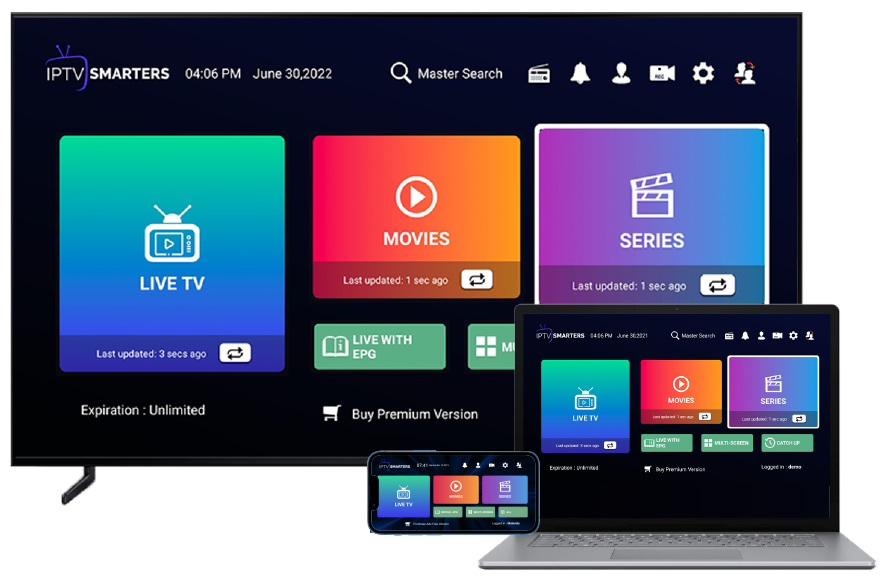Improve Your Viewing Experience: IPTV Subscription with Substantial Networks
Improve Your Viewing Experience: IPTV Subscription with Substantial Networks
Blog Article
Just How IPTV Works: A Step-by-Step Overview to Internet Protocol Television Innovation
Internet Procedure Tv (IPTV) has actually reinvented the way we take in tv material, providing a new world of opportunities through the power of the net. Understanding the intricacies of exactly how IPTV works can clarify the modern technology that drives this innovative type of media delivery. From the essential principles of IPTV to the complex process of web content shipment, each step plays an essential function in making certain a seamless viewing experience. In this overview, we will certainly uncover the hidden mechanisms that make IPTV a fascinating combination of modern technology and enjoyment.
IPTV Essentials
In recognizing IPTV basics, it is crucial to realize the essential workings of this technology in providing television content over the net. IPTV, which represents Web Method Television, utilizes Net Method (IP) networks to send television material to customers' gadgets. Unlike traditional approaches of relaying tv content through cable or satellite signals, IPTV streams media through high-speed internet connections.

Furthermore, IPTV enables interactive capacities, such as video clip on need (VOD) and digital program guides (EPG), improving the user experience by giving more control and versatility in accessing web content. In general, recognizing the basics of IPTV sets the structure for discovering its even more innovative functionalities and the benefits it offers to modern-day television usage.
Web Content Shipment Refine
Reliable material delivery in IPTV systems involves a well-structured procedure that guarantees seamless transmission of tv web content over IP networks. The material shipment procedure in IPTV begins with the development of the video content, which is after that inscribed into electronic style ideal for IP transmission. This encoded web content is then securely kept on web servers called media servers. When a viewer requests particular material, the IPTV system gets the requested information from the media web servers and delivers it to the customer's device online.

Middleware Functionality
With the integration of middleware, IPTV systems gain enhanced capability that improves user communication and content administration. Middleware serves as a crucial element that bridges the sites gap between the interface and the back-end infrastructure, helping with seamless communication and communication within the IPTV system. One of the crucial features of middleware in IPTV is to allow individualized user experiences by providing features such as interactive program guides, video-on-demand services, interactive advertising, and user preferences administration. By centralizing these functionalities via middleware, service carriers can provide a much more vibrant and customized IPTV experience to their clients.
Tool Compatibility
Provided the essential duty of middleware in allowing seamless interaction and material monitoring in IPTV systems, an essential element to consider is the compatibility of tools utilized for accessing the IPTV solutions. Gadget compatibility is essential for guaranteeing a smooth customer experience and optimum efficiency when accessing IPTV web content.
In the context of IPTV, gadget compatibility describes the ability of a device to properly interact with the IPTV solution, show content properly, and support the needed protocols and codecs for streaming video clip web content online. Different tools, such as clever TVs, set-top boxes, mobile phones, tablet computers, and computers, may have differing levels of compatibility with IPTV services.
To ensure a smooth viewing experience, it is essential for customers to pick tools that work with the specific IPTV service they are making use of. Additionally, IPTV company should offer assistance for a wide variety of tools to provide to the diverse needs of their individual base. By focusing on device compatibility, both their explanation customers and company can boost the overall IPTV experience.
Top Quality of Solution (QoS)
Considering the critical duty of maintaining a high requirement of performance and dependability in IPTV systems, making sure constant Top quality of Solution (QoS) stays an essential facet of the customer experience. QoS in IPTV describes the capability of the system to supply material with marginal disturbances, high resolution, and quick loading times. To accomplish optimum QoS, different factors need to be attended to. Network transmission capacity is critical to support high-quality video streaming without buffering or pixelation. In addition, latency, jitter, and packet loss must be reduced to improve the seeing experience.
Company utilize QoS devices such as traffic prioritization, buffering, and mistake adjustment to maintain a stable IPTV solution. By focusing on IPTV website traffic over less time-sensitive information, carriers can make sure smooth playback also throughout top use hours. Buffering helps make up for network changes, while error adjustment techniques enhance information stability.
Continual monitoring and optimization of QoS criteria are vital to adapt to altering network conditions and user needs. Ultimately, a robust QoS framework is important for providing a seamless and satisfying IPTV experience to individuals.
Verdict
In verdict, IPTV runs via the transmission of television material over web method networks. High quality of Solution plays a critical role in their explanation preserving the performance and dependability of IPTV services - IPTV subscription.
Report this page